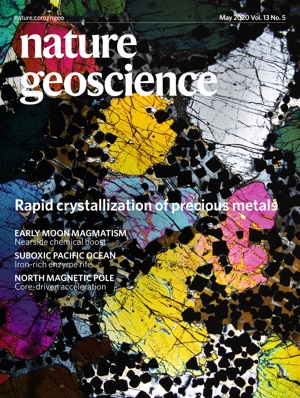Formation of platinum-group ore deposits & sub-volcanic intrusions
Recent News
- Neoma Mass Spectrometer Commissioning
- Applied Geophysics Course EM-31, ERT & GPR Surveys
- IRC Research Ally Prize
- New instruments for high precision land surveying arrive at UCD
- Neoma MC-ICP-MS delivery
- Hook Head Peninsula Fieldtrip
- Next Generations Explorers Award
- Software Agreement with Baker Hughes
- Maeve Boland elected Fellow of the Geological Society of America
- New faculty - Dr Kara English
- New faculty – four Ad Astra Fellows
- Dr Laia Comas-Bru WCRP/GCOS Data Prize
- Mass extinction - learning from the past for the future
- Formation of platinum-group ore deposits & sub-volcanic intrusions
- UCD’s School of Earth Sciences collaboration with Irish-based NGO Self Help Africa (SHA)
- Swampy rainforests in Antarctica dated to the mid-Cretaceous
- Professor Frank McDermott Nature Publication
- The Blue Book Project
- 2019
- 2018
- 2017
- 2016
Fresh insight into the formation of platinum-group ore deposits and sub-volcanic intrusions
Research by Professor Stephen Daly of UCD School of Earth Sciences, in collaboration with colleagues at Keele University, Durham University and the University of Manchester, features on the front cover of the May 2020 issue of (opens in a new window)Nature Geoscience.
The paper, co-authored by Professor Daly ((opens in a new window)https://doi.org/10.1038/s41561-020-0568-3), sheds new light on how platinum group elements (PGE), such as platinum, palladium and rhodium – metals over ten times rarer than gold - are concentrated in igneous rocks. These metals form ore deposits in the solidified remains of sub-volcanic magmatic intrusions in the Earth’s crust, known as layered mafic intrusions. PGEs are currently in great demand due to their use in catalysis and in green technologies such as fuel cells.
The research involved a detailed strontium isotope study of PGE-enriched layers in the 60-million-year-old extinct volcano on the island of Rum in northwestern Scotland. The paper shows that PGE mineralization can form very rapidly in sub-volcanic magmatic systems and supports previous work by the same team suggesting that the long-held concept of large magma chambers needs revision. Instead magmas are better viewed as intruding in small batches, repeatedly injected into the sub-volcanic crystal mush.
Technical work for the project, under Professor Daly’s supervision, was carried out at the National Centre for Isotope Geochemistry at UCD by Luke Hepworth, then a PhD student at Keele University. Dr Hepworth’s principal supervisor, Dr Brian O’Driscoll, the project leader, previously worked as a UCD postdoc with Professor Daly before moving to Keele as a Lecturer. Dr O’Driscoll is now a Senior Lecturer at the University of Manchester.
Milligram samples were drilled from chemical zones in feldspar crystals associated with the PGE-enriched layers using a novel microsampling method, guided by SEM imaging. Following acid digestion and ion exchange chromatography (to separate the strontium), the samples were analysed for their strontium isotopic composition by thermal ionisation mass spectrometry at UCD.
The preservation of the measured strontium isotope variations within crystals over distances of c. 100 microns requires very rapid cooling of the intrusion and provides evidence that crystallisation of the PGE-rich layers occurred within 10s to 100s of years. The work also shows that layered intrusions such as the Rum intrusion form by repeated self-intrusion of small batches of magma during solidification rather than by protracted cooling of a single implausibly large body of magma. This new insight has important implications for the understanding of precious-metal mineralization in mafic igneous systems in general.

Front cover of the May 2020 issue of Nature Geoscience. The image shows a photomicrograph in cross-polarized light of a precious-metal-bearing layer from the Rum layered intrusion, Scotland. The brightly coloured crystals are olivine and the smaller black crystals are Cr-spinel. Image: Luke Hepworth, formerly of Keele University and the University of Manchester, UK. Cover Design: Alex Wing.
See (opens in a new window)Hepworth et al. 2020.